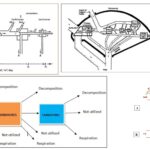Basic Microbiology 13 Views 1 Answers
Sourav PanLv 9September 4, 2024
Most viruses and bacteria enter cells via specific receptors. Why would a cell have receptors that allow pathogens to enter?
Most viruses and bacteria enter cells via specific receptors. Why would a cell have receptors that allow pathogens to enter?
Please login to save the post
Please login to submit an answer.
Sourav PanLv 9May 15, 2025
Cells have receptors that allow pathogens to enter primarily because these receptors are typically involved in essential physiological processes that are exploited by pathogens. Here’s why cells have these receptors:
1. Normal Cellular Functions
- Cellular Communication: Many receptors on the cell surface are involved in normal cellular communication and signaling. For example, receptors for growth factors, hormones, and neurotransmitters are crucial for regulating cell growth, metabolism, and responses to external signals. Pathogens can exploit these receptors to gain entry into cells.
- Nutrient Uptake: Some receptors are involved in the uptake of essential nutrients or molecules. For instance, receptors that mediate the uptake of iron or other nutrients can be hijacked by pathogens that mimic these nutrients or exploit the uptake mechanism to enter the cell.
2. Host-Pathogen Interactions
- Mimicry: Pathogens often evolve to mimic the ligands or molecules that normally bind to these receptors. By doing so, they can gain entry into the host cells. For example, some viruses use receptors that are normally involved in immune cell activation or adhesion to enter the cells.
- Receptor Utilization: Certain bacteria and viruses have evolved specific mechanisms to bind to receptors that are normally used for essential cellular functions. For instance, the HIV virus uses the CD4 receptor (which is involved in immune signaling) and coreceptors (such as CCR5 or CXCR4) to enter T cells.
3. Immune System Modulation
- Immune Evasion: Some pathogens use receptors that are part of the immune system’s normal functioning to evade detection or modulate the immune response. By exploiting these receptors, pathogens can avoid or subvert immune surveillance.
4. Cellular Homeostasis
- Cellular Regulation: Receptors involved in processes such as cell adhesion, cell migration, and cell-cell interactions are crucial for maintaining tissue homeostasis and function. Pathogens that interfere with these processes can exploit these receptors to enter cells or disrupt normal cellular functions.
Examples:
- HIV: The HIV virus binds to the CD4 receptor and coreceptors (CCR5 or CXCR4) on T cells to enter and infect these cells.
- Influenza Virus: The influenza virus binds to sialic acid receptors on respiratory epithelial cells to enter and infect these cells.
- Bacteria: Some bacteria, such as Helicobacter pylori, bind to specific receptors on gastric epithelial cells to establish infection and evade immune responses.
0
0 likes
- Share on Facebook
- Share on Twitter
- Share on LinkedIn
0 found this helpful out of 0 votes
Helpful: 0%
Helpful: 0%
Was this page helpful?




